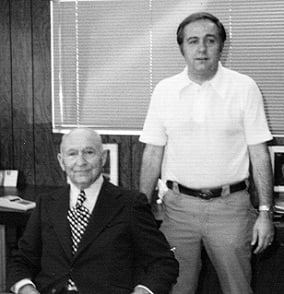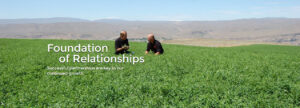Going Global Part IV
This is part IV in an educational blog series published by Anderson Hay. Read Part I, “Going Global: The History of The Leading U.S. Hay Exporter”, Part II, “Going Global: Overcoming Obstacles Exporting Timothy Hay” and Part III,”Going Global: Coping with a Tiny Pest” on the Race Horse and Timothy Hay Blog.

When Japan halted all shipments of hay from the Untied States, a great deal was at stake, not the least of which was the continued viability of Anderson Hay. At this particular time, Ron Anderson was his own man, but also alone against the elements. Clarence Anderson has suffered several small strokes and stepped back from day-to-day involvement or decision-making. Ron Anderson’s sons were not yet done with their education nor ready to step into high profile positions with the company.
Ron’s wife Robin was a loyal and staunch supporter of his work and had spent a great deal of time working at various positions at the company. But she still had domestic responsibilities at this crucial time.
Luckily, Ron found he was not completely alone professionally. Clarence before him had always maintained involvement in professional associations that benefitted the industry and the company. Clarence had been a member of the National Hay Association since 1954. By the early 1970s, Ron had been taking an active role in the association and served a term as association president. The NHA Board worked with Ron as well as with the United State Department of Agriculture (USDA) Foreign Agricultural Service (FAS) agency to study the problem, determine the cause and propose a workable solution. All hay shipments by the mid-1070s had been banned from Japan so it was in the best interests of the entire industry to work collegially to find a solution quickly.
Working together, the reason for the contamination was found. First, the investigators determined that the quarantine was not so much that the containers were filled with millions of buzzing Hessian Flies ready to swarm into action when they arrived in Japan. Rather, upon close inspection, the Japanese had found the timothy hay to include Agropyron repens, often called quackgrass or on occasion crested wheat grass. The amounts of quack grass found in the shipments were above the acceptable threshold of contamination according to Japanese regulations. Since the quackgrass is a particular delicacy for the ravenous Hessian Flies, the Japanese office of Plant Protection Quarantine (PPQ) shut down the importing of Timothy.
Some would say the Japanese were being overly cautious in placing the quarantine; however it is hard to place blame with them. According to Ron Anderson, the Japanese reluctance was understandable since they had recently been receiving reports of disease problems in their all-important rice fields. They quickly admitted that the rice field issues were not due to Hessian Flies nor were they in any way related to the quackgrass infestation. However, given the critical importance of domestically grown rice in the Japanese diet, their strict application of the regulations made sense.


